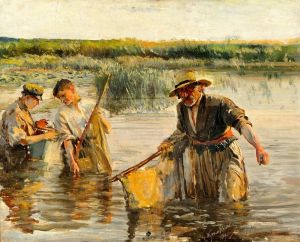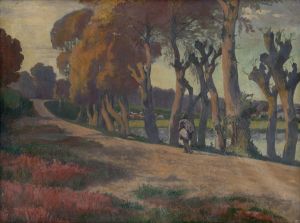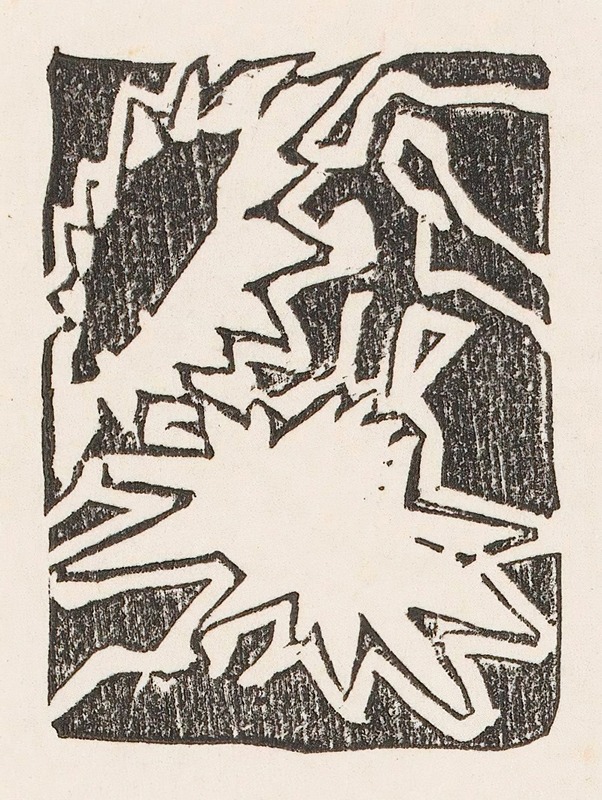
Gestileerde zonnebloem
A hand-painted replica of Reijer Stolk’s masterpiece Gestileerde zonnebloem, meticulously crafted by professional artists to capture the true essence of the original. Each piece is created with museum-quality canvas and rare mineral pigments, carefully painted by experienced artists with delicate brushstrokes and rich, layered colors to perfectly recreate the texture of the original artwork. Unlike machine-printed reproductions, this hand-painted version brings the painting to life, infused with the artist’s emotions and skill in every stroke. Whether for personal collection or home decoration, it instantly elevates the artistic atmosphere of any space.
Reijer Stolk was a Dutch artist known for his contributions to graphic design and printmaking in the early 20th century. One of his notable works is "Gestileerde zonnebloem," which translates to "Stylized Sunflower" in English. This piece exemplifies Stolk's unique approach to art, characterized by a blend of modernist influences and traditional techniques.
Stolk was born in 1896 in the Netherlands and became an influential figure in the Dutch art scene. He was part of a generation of artists who were exploring new forms and techniques, influenced by movements such as Art Nouveau and later, De Stijl. His work often incorporated elements of abstraction and stylization, which can be seen in "Gestileerde zonnebloem."
"Gestileerde zonnebloem" is a work that reflects Stolk's interest in nature and his ability to transform natural forms into stylized, almost abstract compositions. The sunflower, a common subject in art due to its vibrant color and distinctive shape, is reimagined by Stolk in a way that emphasizes its structural elements over its realistic depiction. This approach aligns with the broader modernist movement, which sought to break away from traditional representation and explore new ways of seeing and interpreting the world.
Stolk's technique in this piece likely involved printmaking, a medium he was particularly skilled in. Printmaking allowed artists like Stolk to experiment with form and repetition, creating works that could be reproduced and disseminated more widely than traditional paintings. This was an important aspect of modernist art, as it aligned with the movement's democratic ideals of making art accessible to a broader audience.
The composition of "Gestileerde zonnebloem" is marked by its use of line and form to create a sense of rhythm and movement. The sunflower is not depicted in a realistic manner but is instead broken down into its essential shapes and lines. This abstraction invites viewers to engage with the work on a different level, appreciating the interplay of form and space rather than focusing solely on the subject matter.
Stolk's work, including "Gestileerde zonnebloem," contributed to the development of modern art in the Netherlands. His ability to blend traditional subjects with modernist techniques helped pave the way for future generations of artists. While not as widely known as some of his contemporaries, Stolk's work remains an important part of the Dutch artistic heritage.
In summary, "Gestileerde zonnebloem" by Reijer Stolk is a significant example of early 20th-century Dutch modernist art. Through his stylized depiction of a sunflower, Stolk demonstrates his mastery of form and abstraction, contributing to the broader movement of modernism in art. His work continues to be appreciated for its innovative approach and its role in the evolution of modern art in the Netherlands.





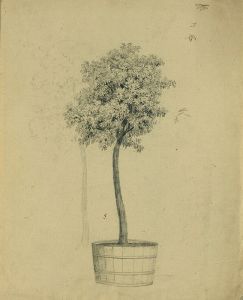
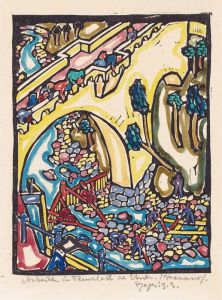
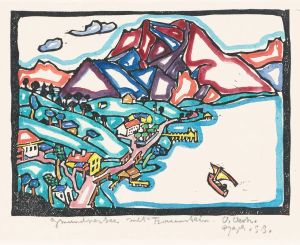
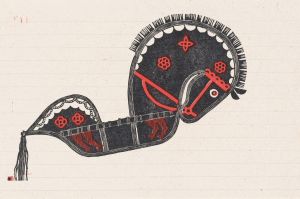
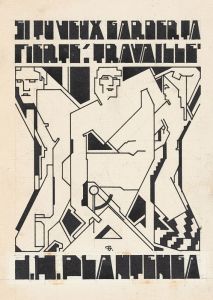
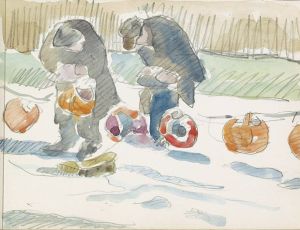
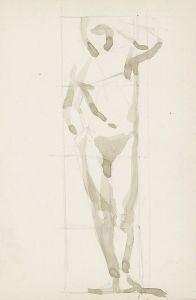
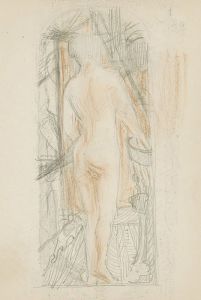
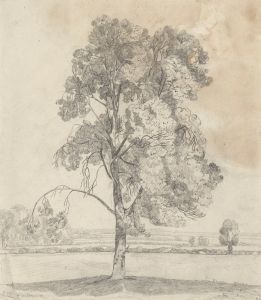
![[Interior design drawings for unidentified rooms.] [Sketch for room colored green and orange](/imgs/249269/s/winold-reiss-interior-design-drawings-for-unidentified-rooms-sketch-for-room-colored-green-and-orange-9a5c830b.jpg)
![Interior perspective drawings of Hotel Siwanoy, Mount Vernon, NY.] [Interior perspective study of Grill in red, yellow, and orange](/imgs/249369/s/winold-reiss-interior-perspective-drawings-of-hotel-siwanoy-mount-vernon-ny-interior-perspective-study-of-grill-in-red-yellow-and-orange-5860095.jpg)

